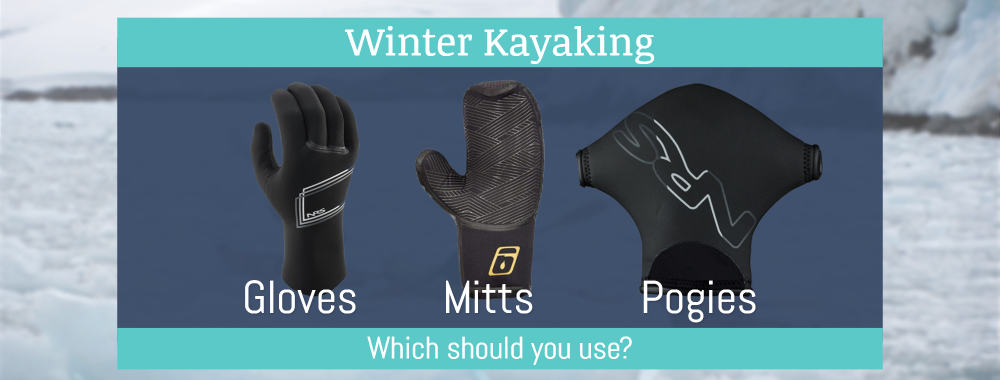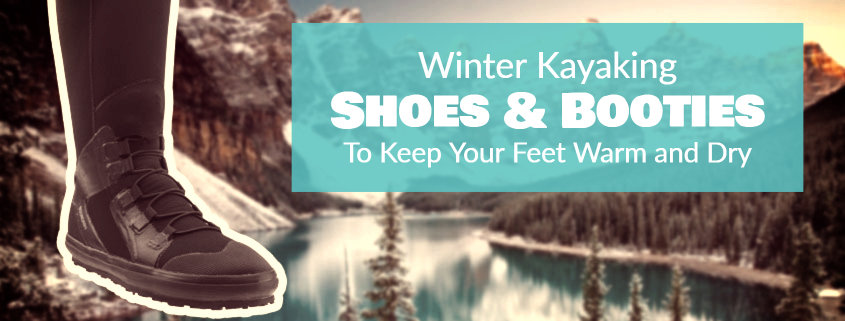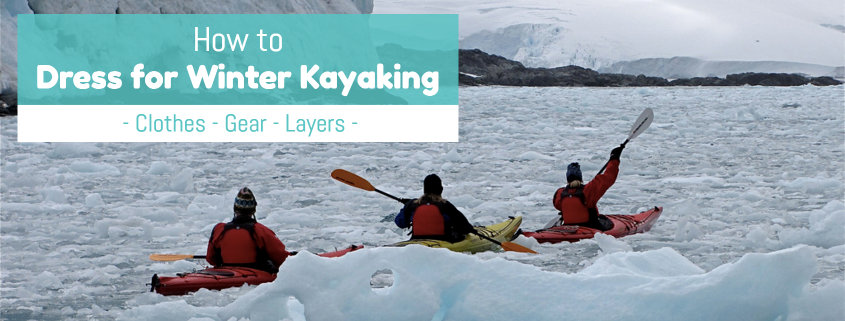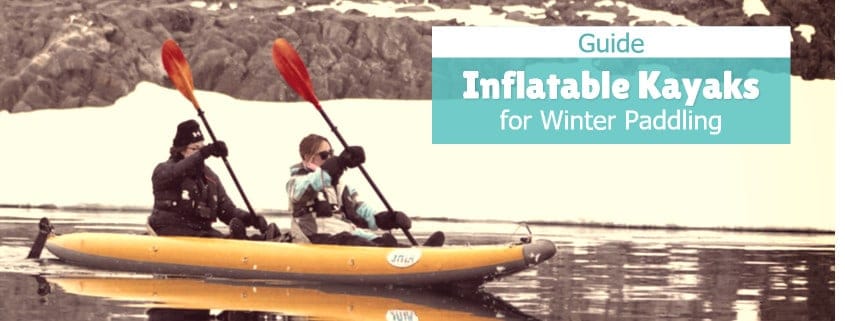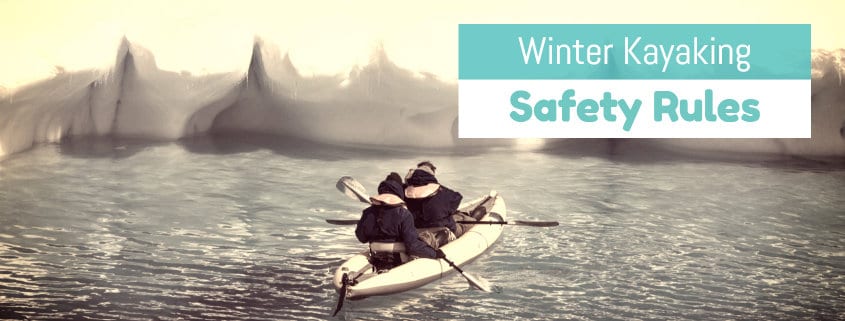Winter kayaking is great fun, but it requires special equipment. Gloves help protect your hands from the cold water and wind, making winter paddling safer and more comfortable.
Many types of winter kayaking gloves are available, but not all of them will work well under all conditions.
In this article, I’ll go over the top three types of winter kayak hand-wear and tell you when and why each kind works best.
Gloves vs. Mitts vs. Pogies? Which is better in cold weather?
Fingerless gloves should only be used in warmer weather. In colder conditions, keeping your hands warm is a vital part of your winter paddling clothes. Cold hands make paddling difficult, and even worse, you might get frostbite.
There are three types of gloves you can choose from that provide ample thermal protection if you go paddling in the cold:
- Gloves
- Mittens
- Pogies
Each has its advantages and disadvantages.
Let’s look at what they’re made of, what type of weather they are suited for, and which one is right for you.
Gloves for winter kayaking
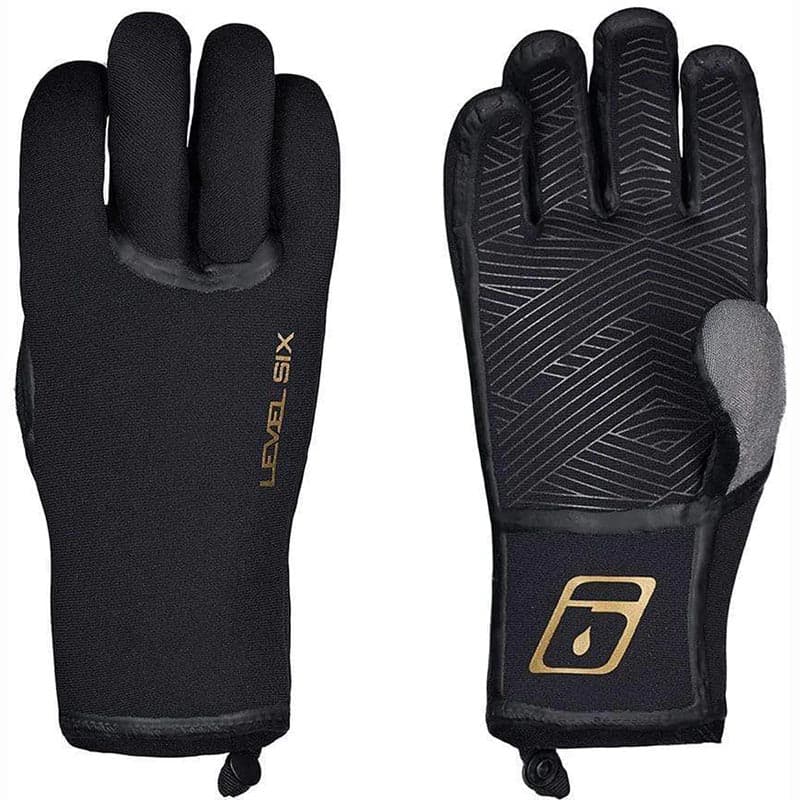
Pros
Cons
Winter kayaking gloves are made from neoprene, which is a stretchy and warm material that allows for good flexibility and dexterity. These gloves also have rubberized patterns to improve grip and durability.
Gloves with a pre-bent claw-like curvature to the fingers make holding a paddle easier. In contrast, you need to exert effort to bend straight scuba diving gloves, which becomes tiring for your hands and forearm.
2-3 mm neoprene kayaking gloves are a good option. You can also get 1 mm gloves, but I would only recommend that for shoulder season, not cold weather. The thinner they are, the easier they are to grip with, but the colder they will be. Thicker gloves are stiffer, but warmer.
Neoprene gloves need to fit perfectly, so get your sizing right. If they are too big, they won’t fit snugly, making it harder to grab the kayak paddle, and they won’t keep your hands as warm. Conversely, if they’re too tight, your hands won’t have enough circulation and will get cold.
Regarding sizing, you’ll want to choose gloves that fit snugly around your wrists and fingers. This will ensure that your hands stay warm and protected throughout the entire duration of your adventure.
Manufacturers don’t tell you that neoprene kayaking gloves wear out quickly. There are multiple abrasion points between the fingers and on the palm, where the material will turn thinner with time and develop a hole. Putting a waterproof adhesive on these abrasion points helps lengthen the gloves’ lifespan.
Mitts
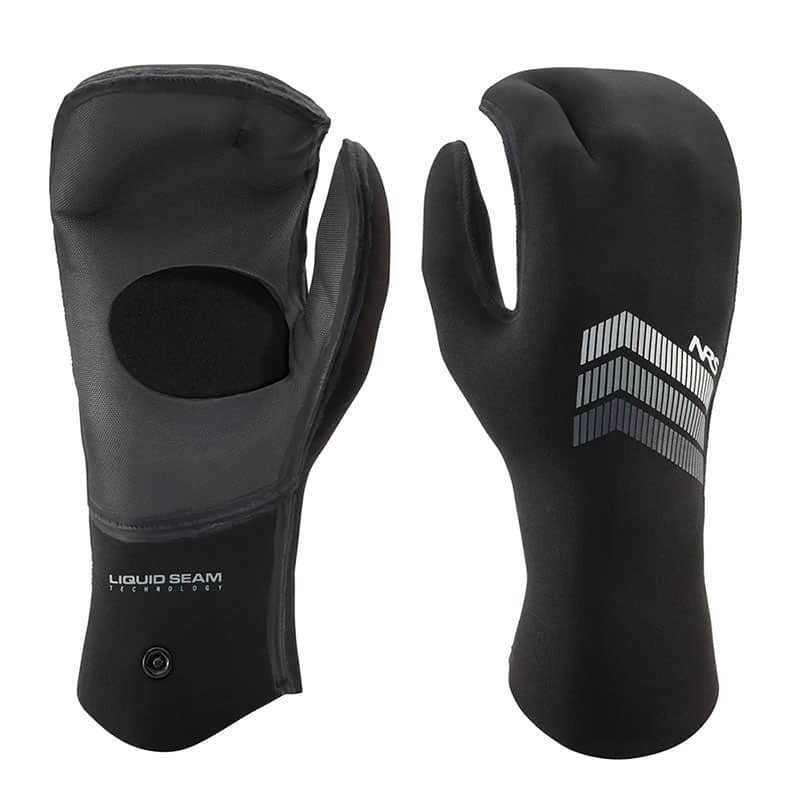
Pros
Cons
Kayaking mitts (mittens) are meant for colder weather than when you would wear neoprene gloves.
Mittens are warmer than gloves because there is less surface area exposed to the cold, and your fingers are all together in a small space sharing your body warmth.
Like gloves, mittens also have rubber dots or patterns to improve grip.
Compared to gloves, they wear out slower, because the only abrasion point is between the thumb and fingers, where you grip the paddle.
The biggest problem with mitts is their lack of dexterity. You can grab the paddle well, but not much else.
You can also buy open-palm mittens, allowing some direct contact between your palm and the paddle.
Pogies
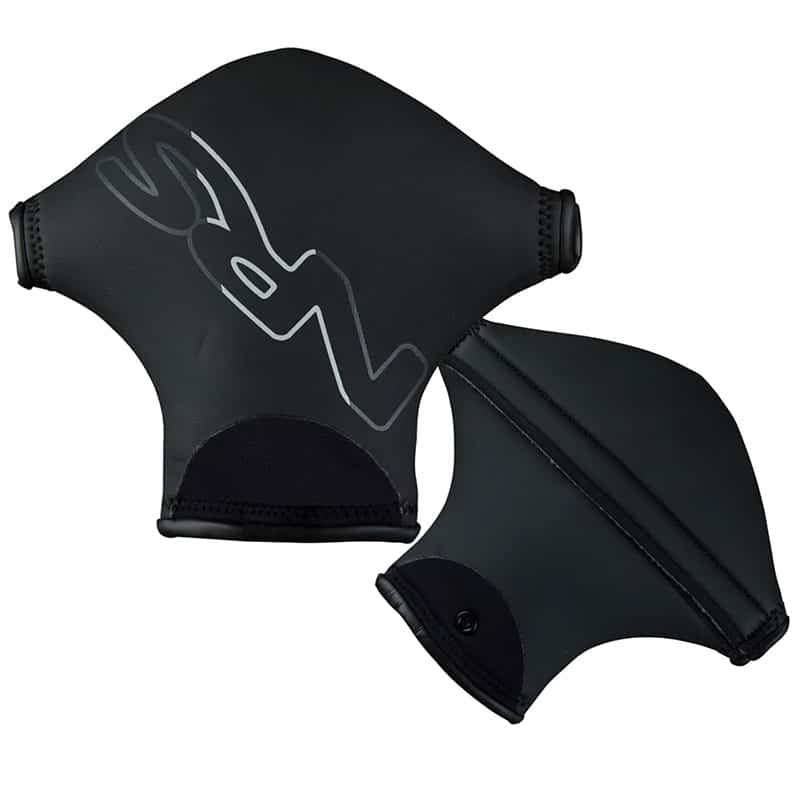
Pros
Cons
Pogies are covers you wrap around the paddle shaft and seal with velcro, gaskets, or something similar. You can keep your hands in direct contact with the paddle shaft when using a pogie, which is excellent for control on long kayaking trips.
Pogies trap your body heat and create a micro-climate inside them, so your hands are perfectly warm when holding the shaft and paddling. In fact, pogies are the warmest option for protecting your hands during winter kayaking.
They are made out of 2 types of material:
- Neoprene, which is great for warmth, but they have a definite weight to them. You won’t notice on a short trip, but paddle for a few hours, and you’ll feel your shoulders are more tired than they would be.
- Waterproof fabric, which is lighter and lined for warmth.
Their biggest shortcoming, though, is that pogies are attached to the paddle shaft. Your hands are unprotected from the cold if you pull them out, and this is especially uncomfortable if you capsize.
I used them for the first time kayaking in Alaska, and they were great.
Once you’ve found the perfect pair of gloves, dry and store them properly. Don’t leave them lying around in the sun or next to your stove because this will cause them to become brittle over time. Instead, hang them somewhere warm where they’ll remain safe and sound for years to come.
Protecting your hands and keeping them warm and dry is essential for paddling through cold water.
Take care of your gloves, and they’ll take care of you.

